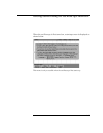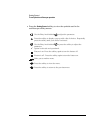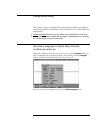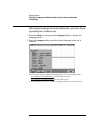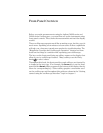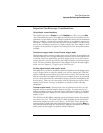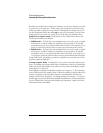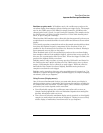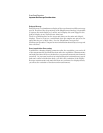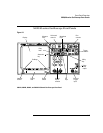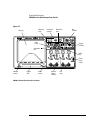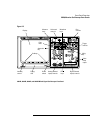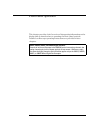
2-3
Front-Panel Overview
Important Oscilloscope Considerations
Important Oscilloscope Considerations
Using Single versus Run/Stop
The oscilloscopes have a Single key and a Run/Stop key. When you press Run
(key is illuminated in green), the trigger processing and screen update rate are
optimized over the memory depth. Single acquisitions always use the maximum
memory available—at least twice as much memory as acquisitions captured in
Run mode—and the scope stores at least twice as many samples. At slow sweep
speeds, the oscilloscope operates at a higher sample rate when Single is used
to capture an acquisition, as opposed to running, due to the increased memory
available.
Using Auto trigger mode versus Normal trigger mode
Normal trigger mode requires a trigger to be detected before an acquisition can
complete. In many cases, a triggered display in not needed to check signal levels
or activity. For these applications, use Auto trigger mode. If you only want to
acquire specific events as specified by the trigger settings, use Normal trigger
mode. For more detailed discussion of Auto trigger mode and Normal trigger
mode, refer to Chapter 3, “Triggering the Oscilloscope.”
Viewing signal detail with acquire mode
Remember how you had to constantly adjust the brightness on old analog scopes
to see a desired level of detail in a signal, or to see the signal at all? With the
Agilent 54620/40-series oscilloscopes, this is not necessary. The Intensity knob
operates much like the brightness knob on your computer screen, so you should
set it to a level that makes for comfortable viewing, given the room lighting, and
leave it there. Then you can control the detail by selecting an Acquire mode:
Normal, Peak Detect, Average, or Realtime as described in the following
paragraphs.
Normal acquire mode Normal mode is the acquisition mode that you will
probably use for acquiring samples most of the time. It compresses up to 2
million acquisition points per channel for the 54620-series and up to 4 million
acquisition points per channel for the 54640-series into a 1,000-pixel column
display record.
The 54620-series 200 MSa/s sampling speed specification means that samples
are taken every 5 ns. The 54640-series 2 GSa/s sampling speed specification
means that samples are taken every 500 ps. At the faster sweep speeds, the
running display is built from many individual triggers. If you press the Stop key,
and pan and zoom through the waveform by using the Horizontal and Vertical
knobs, only the last trigger’s acquisition will be displayed.



